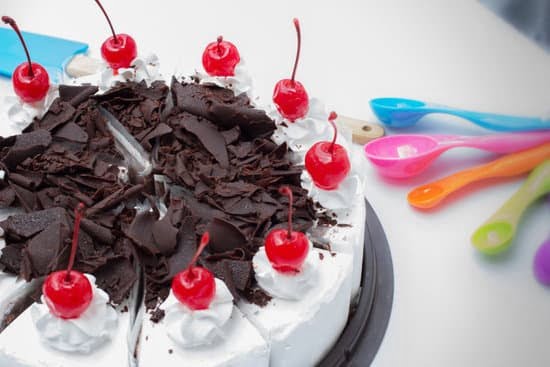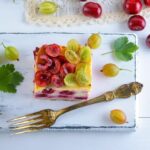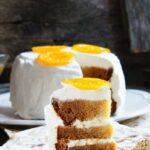Are you interested in learning how to make a stencil for cake decorating? Stencils are an essential tool for adding intricate designs and patterns to cakes, and making your own unique stencils can add a personal touch to your creations. In this article, we will guide you through the process of creating and using stencils for cake decorating, from the materials needed to advanced techniques.
Stencils are an invaluable tool for cake decorators, allowing them to easily add stunning designs and patterns to their creations with precision and consistency. Whether you are a novice or an experienced baker, knowing how to make your own stencils can take your cake decorating skills to the next level. By understanding the importance of stencils in cake decorating, you can unleash your creativity and elevate the visual appeal of your cakes.
In this introductory section, we will provide an overview of the various aspects of making and using stencils for cake decorating. We will discuss the materials needed, step-by-step guides on designing and cutting the stencil, as well as tips on using and caring for your homemade stencil.
Additionally, we will explore advanced techniques and troubleshooting tips to help you master the art of stencil cake decorating. So let’s dive into the world of stencils and unleash your creativity in cake decoration.
Materials Needed
Creating a stencil for cake decorating can be a fun and creative way to add intricate designs and patterns to your baked creations. To get started, you will need a few essential materials to make your own stencils at home. Here is a detailed list of all the supplies required to make a stencil for cake decorating:
- Stencil Material: The most common material for making stencils for cake decorating is food-safe plastic sheets or acetate. These can be easily found at baking supply stores or online.
- Cutting Tool: A sharp utility knife or craft knife will be needed to cut out the design from the stencil material.
- Design Template: Whether you are drawing the design by hand or printing it from the internet, you will need a clear and precise design template to create your stencil.
- Spray Adhesive or Tape: To keep the stencil in place while working, you will need either spray adhesive specifically made for stencils or removable tape that won’t damage the cake surface.
- Surface for Cutting: It’s important to have a cutting mat or sturdy surface to protect your work area when cutting the stencil material.
With these materials in hand, you are ready to move on to the next step – designing your unique stencil for cake decorating. Whether you choose a simple pattern or an intricate design, creating your own stencils allows for endless possibilities when decorating your cakes.
| Material | Description |
|---|---|
| Stencil Material | Food-safe plastic sheets or acetate |
| Cutting Tool | Sharp utility knife or craft knife |
| Design Template | Clear and precise design template |
| Spray Adhesive or Tape | Spray adhesive specifically made for stencils or removable tape |
Designing the Stencil
Gather Your Materials
Before you start designing your stencil, gather all the necessary materials such as paper or acetate sheets, pencil, ruler, exacto knife, and any other design tools you may need. The type of material you choose for your stencil will depend on the intricacy of the design and how durable you need the stencil to be for repeated use.
Brainstorm and Sketch Your Design
Once you have your materials ready, it’s time to brainstorm and sketch out your design ideas. Consider the theme of the cake, whether it’s for a birthday, wedding, or other special occasion. You can also take inspiration from patterns in nature, geometric shapes, or even freehand designs. Sketch out several variations of your design until you find one that you’re happy with.
Create and Transfer Your Design
Using your chosen material, carefully trace or transfer your final design onto the surface of the stencil material. If using paper, make sure it is sturdy enough to withstand cutting without tearing. For acetate sheets, transparency film or mylar are popular choices as they are durable but flexible enough for detailed cutting.
By following these steps and using these techniques, anyone can learn how to make a stencil for cake decorating that will result in beautifully designed baked goods.
Cutting the Stencil
When it comes to cutting a stencil for cake decorating, accuracy is key. A well-cut stencil can make all the difference in achieving professional-looking designs on your cakes. In this section, we will discuss the techniques and tips for cutting the stencil accurately to ensure that your cake decorations turn out just the way you envision them.
First and foremost, it’s important to choose the right material for your stencil. Thin, flexible plastic sheets are often used for making stencils as they can be easily cut with a sharp craft knife or scissors. It’s important to work on a flat, sturdy surface when cutting the stencil to ensure clean and precise cuts.
One technique for cutting the stencil accurately is to secure the plastic sheet firmly in place using masking tape or weights. This will prevent the stencil from moving around while you are cutting, allowing for more precise lines and shapes.
Additionally, using a high-quality craft knife with a sharp blade will make the cutting process much smoother and help you achieve clean edges on your stencil designs. Be sure to take your time and cut slowly and carefully to avoid any mistakes.
Practice makes perfect when it comes to cutting stencils for cake decorating. Experiment with different cutting techniques and tools to find what works best for you. With time and patience, you’ll become more confident in your ability to cut stencils accurately and create stunning designs on your cakes.
Using the Stencil
Once you have created your unique stencil for cake decorating, it’s time to put it to good use. Whether you are using royal icing, powdered sugar, or cocoa powder, using a stencil can add an extra touch of elegance and professional flair to your cakes. Here’s a step-by-step tutorial on how to effectively use the stencil for cake decorating.
1. Positioning the Stencil: Before getting started, ensure that your cake is clean and ready for decoration. Hold the stencil firmly against the surface of the cake where you want to apply the design.
2. Applying the Decoration: Use a flat sifter or shaker filled with powdered sugar, cocoa powder, or any suitable colored edible dust. Lightly dust the top of the stencil with an even layer of your chosen decoration.
3. Lift and Reveal: Carefully lift one edge of the stencil while holding it in place with one hand to check if the design has been transferred evenly. Once you are satisfied with the coverage, gently lift off the stencil from the cake.
For more intricate designs or larger cakes, consider using masking tape and toothpicks to secure the stencil in place while applying decorations.
| Step | Instruction |
|---|---|
| 1 | Positioning the Stencil: Hold firmly against cake surface |
| 2 | Applying Decoration: Dust evenly with chosen decoration |
| 3 | Lift and Reveal: Carefully remove stencil to reveal design |
Using these steps will help you effectively use your homemade stencils for cake decorating and achieve professional-looking results every time.
Remember that practice makes perfect when it comes to using stencils for cake decorating. Be patient and experiment with different techniques to find what works best for you and your desired designs. With time and practice, you’ll be able to create stunning cakes that look like they were made by a professional pastry chef.
Cleaning and Storing the Stencil
Cleaning Your Stencil
After using your stencil for cake decorating, it’s important to clean it thoroughly to ensure its longevity and effectiveness for future use. The best way to clean a stencil is by gently washing it with warm, soapy water and a soft bristle brush.
Avoid using harsh scrubbers or abrasive cleaners as they can damage the delicate design of the stencil. Make sure to remove any food particles or icing residue from both sides of the stencil before allowing it to air dry completely.
Storing Your Stencil
Proper storage of your stencils is crucial in maintaining their shape and preventing any damage. Once your stencil is completely dry, store it flat in a clean, dry place. You can place it between sheets of parchment paper to prevent any sticking or bending.
Avoid folding or creasing the stencil as this can impact its performance when used for cake decorating. Consider investing in a dedicated storage folder or case specifically designed for stencils to keep them organized and well-protected.
Regular Maintenance
In addition to cleaning and proper storage, regular maintenance of your stencils is essential. Inspect them periodically for any signs of wear and tear, such as fraying edges or weak spots in the material. Address any issues immediately by repairing or replacing the stencil as needed to ensure that it continues to produce crisp, clean designs for your cake decorating projects.
By following these important tips on cleaning and storing your stencils for cake decorating, you can prolong their lifespan and maintain their quality for countless baking adventures.
Advanced Stencil Techniques
Once you have mastered the basic techniques of making and using stencils for cake decorating, you may want to explore more advanced techniques and designs to take your creations to the next level. Here are some advanced stencil techniques that will allow you to create more intricate and impressive cake designs.
1. Multi-layered Stencils: One way to create more complex designs is by using multi-layered stencils. This involves applying one stencil design on top of another to create a layered effect on your cake.
To do this, carefully place the first stencil on the cake and apply the desired decoration (such as colored icing or powdered sugar). Then, carefully remove the first stencil and align the second stencil over the design you just created. Apply the second decoration, and repeat if necessary for additional layers.
2. Negative Space Stenciling: Negative space stenciling involves using the stencil to create a design by leaving certain areas of the cake unadorned. This technique requires careful planning and precision, as you will need to ensure that only specific areas are decorated while leaving other areas untouched.
3. Customized Stencil Designs: For truly unique and personalized cakes, consider creating your own custom stencil designs. This can be done by using a cutting machine or by hand-cutting a design onto a blank stencil sheet. With custom stencils, the possibilities for intricate and personalized cake decorations are endless.
By exploring these advanced stencil techniques, you can elevate your cake decorating skills and create show-stopping desserts that will impress any audience.
At this stage in your journey of learning how to make a stencil for cake decorating, it’s important to keep practicing and experimenting with different designs and techniques. Remember that mastery takes time, so be patient with yourself as you continue to hone your craft.
Troubleshooting
When it comes to making and using stencils for cake decorating, there are a few common issues that may arise. However, with the right solutions, these problems can easily be overcome. Here are some troubleshooting tips for dealing with common stencil-related issues:
1. Insufficient Pressure: If the stencil is not applied to the cake with enough pressure, the design may appear faint or uneven. To ensure a crisp and clear design, use gentle but firm pressure when applying the stencil onto the cake.
2. Bleeding: One of the most frustrating problems when using a stencil is bleeding, where icing or airbrush color seeps under the edges of the stencil, resulting in a messy design. To prevent this issue, make sure your icing or airbrush color is at the right consistency – not too thin or thick – and hold the stencil firmly in place while applying the decoration.
3. Warped Stencil: Over time, stencils can become warped or bent out of shape, affecting the quality of your designs. To tackle this issue, store your stencils flat and in a cool, dry place to prevent warping. If your stencil has already become bent, try placing it between heavy books for a day to flatten it out.
4. Difficult Cutting: Cutting intricate designs into a stencil can be challenging, especially if you’re working with delicate patterns. For smoother cutting, consider investing in high-quality precision cutting tools specifically designed for stenciling.
By being aware of these common issues and implementing these troubleshooting tips, you’ll be better equipped to make and use stencils effectively for cake decorating.
Conclusion
In conclusion, making your own stencils for cake decorating can truly elevate your baking skills and add a personal touch to your creations. By following the steps outlined in this article, you can design, cut, and use stencils to create beautiful and intricate designs on your cakes.
The materials needed are easily accessible, and the process itself is not as daunting as it may seem at first. With practice and patience, you can master the art of stencil cake decorating and impress your friends and family with professional-looking confections.
Remember that designing and cutting the stencil are just the beginning. Learning how to use the stencil effectively is also crucial to achieving stunning results. Practice using different techniques and explore advanced designs to take your cake decorating to the next level. And don’t forget about proper cleaning and storage of your stencils to ensure their longevity.
So, if you’re ready to take your cake decorating skills up a notch, why not give making a stencil a try? Whether you’re a beginner or an experienced baker, creating your own unique stencils can open up a world of creative possibilities for your cakes.
So gather your materials, follow the steps provided in this article, and start experimenting with different designs. With some dedication and creativity, you’ll be amazed at what you can achieve with homemade stencils for cake decorating.
Frequently Asked Questions
Can I Make My Own Cake Stencil?
Yes, you can make your own cake stencil. There are various methods to create a DIY cake stencil, such as using parchment paper, cardboard, or acetate sheets. These materials are easily accessible and affordable.
What Material Is Used to Make Cake Stencils?
Cake stencils can be made from various materials, including plastic, acetate sheets, or even paper. Plastic and acetate sheets are popular choices because they are sturdy, reusable, and easy to clean. However, paper stencils can also work well for one-time use.
How Do You Make a Homemade Stencil?
Making a homemade stencil can be done using various materials such as cardboard, acetate sheets, or even thick paper. Simply draw or trace your desired design onto the material and carefully cut it out using a craft knife. It’s important to ensure that the stencil is sturdy enough to hold its shape when used on the cake.

Welcome to our cake decorating blog! My name is Destiny Flores, and I am the proud owner of a cake decorating business named Cake Karma. Our mission is to provide delicious, beautiful cakes for all occasions. We specialize in creating custom cakes that are tailored specifically to each customer’s individual needs and tastes.





